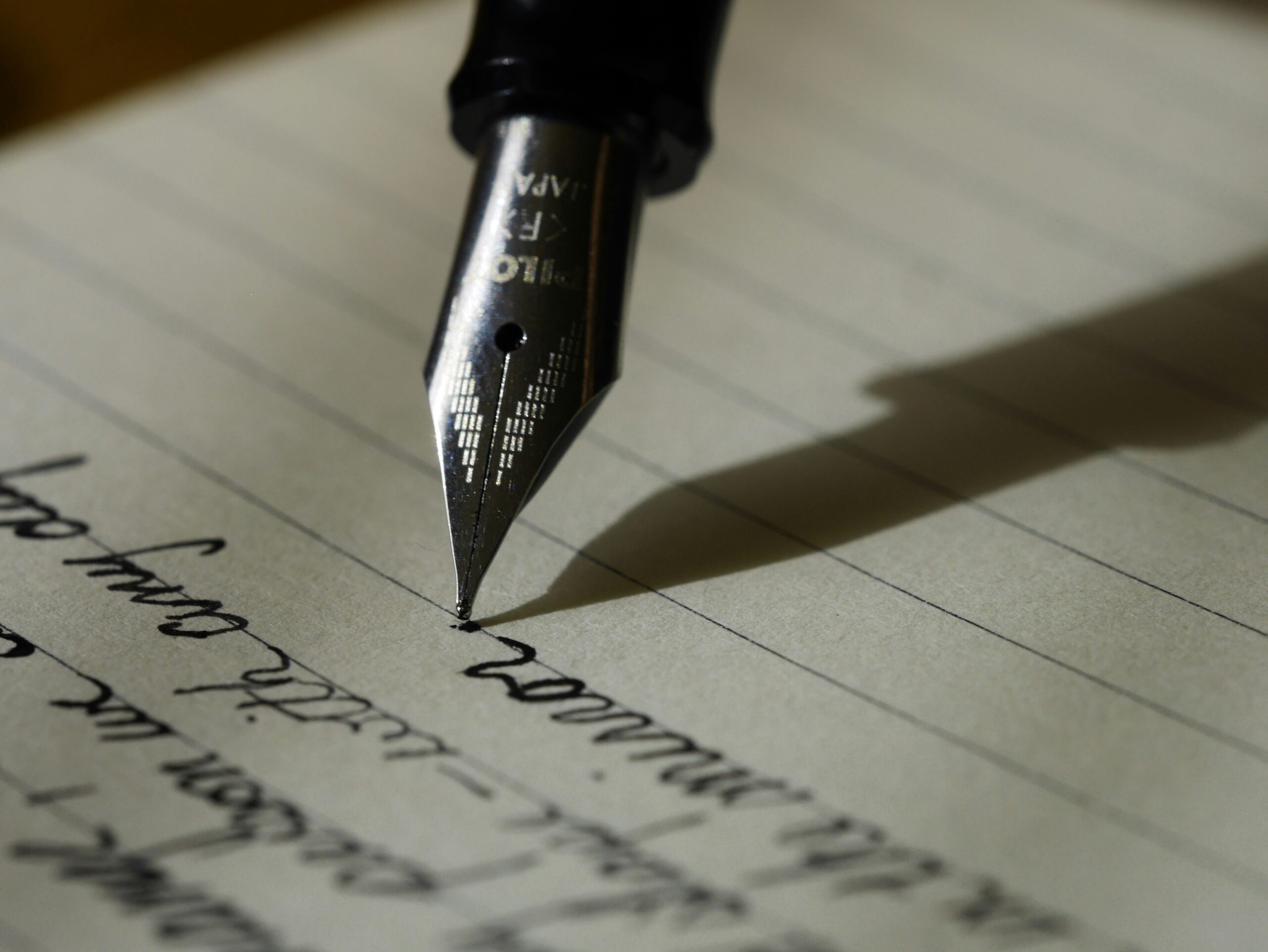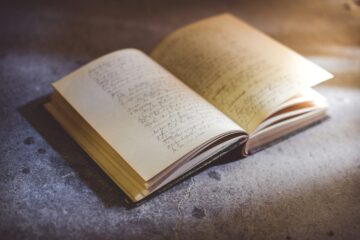English Poetry and Its Classification

What is poetry?
Poetry is a superior quality of the verse.
The imaginative treatment of a serious subject for a noble purpose marks it. Purpose of Poetry
- The goal of poetry has been varied over time.
- Some think that poetry should be didactic. (moral or educational lessons)
- Others believe its primary action is to provide pleasure.
- Some others thought its importance lay in its ability to transport the reader to a higher plane of imaginative reality.
MAJOR FORMS OF POETRY
Here are nearly 11 types of poetry forms in English Literature namely;
- The Epic
- The Mock-epic
- The Sonnet
- The Ode
- The Lyric
- The Idyll
- The Pastoral
- The Elegy
- The Pastoral elegy
- The Ballad
- The Satire
1. THE EPIC
A long narrative poem in a grand style about the functions of a hero of almost mythic dimensions is often of national significance as it deals with or reveals or unfolds the history, hopes, fears, strength, victory and desires of a race or nation or the entire human race( in Milton’s Paradise Lost.)
The Following Criteria.
- It is a long verse narrative poem on a serious subject.
- It is written in a grand style.
- It centres around a heroic figure whose actions depend on the fate of a tribe, race nation or humanity in Milton’s Paradise Lost.
- They are often of national significance.
- It unfolds the history, hope, geography, social structure, fears, victory and desire of a race or nation.
Epic Formulas.
Epic generally follows certain conventions or formulas. This starts with an Invocation. It invokes a muse or guiding spirit to inspire him in his great work.
- The actions involve the hero and his deeds.
- The narration starts in Median Race (in the middle of things) and is a critical point in the action.
- The supernatural beings are often seen taking active roles.
- They describe the process in which one transcends their human limitations and acquires a god-like stature.
CLASSIFICATION OF EPIC
There is a standard distinction between Primary and Secondary epic.
a. PRIMARY EPIC
Also called Folk Epic or Traditional Epic.
- Primary epics are the products of an oral tradition without any definite authorship.
- They are transmitted across generations with an oral tradition and are given a written form only much later.
- They are often a collection of several lays or ballads, brought together by a poet or a bard.
- The hero is a figure of a great nation or cosmic importance.
- The setting of the poem is on a grand scale and maybe worldwide.
- The actions involve extraordinary deeds in battle, the heroic spirit of never kissing the dust in an unjustified battle, long arduous and dangerous journey of the hero.
- In the great actions, Gods and other supernatural beings take the active parts. Sometimes they also move the chess turn.
b. SECONDARY EPIC
- Individual poets who deliberately follow the traditional style, write secondary or literary epics e.g. Virgil’s “Aeneid”.
- These epics also follow certain criteria but these have definite authorship.
- It talks about the contemporary social structure, people, their lives, and everything.
LIST OF EPICS
Epics/Mock Epics
Name of the Poet | Title of the Epic | Language in which written | ||
Homer | Iliad | Greek | ||
Homer | Odyssey | Greek | ||
Virgil | Aeneid | Latin | ||
Anonymous | Beowulf | Anglo-Saxon | ||
Dante | Divine Comedy | Latin | ||
| Tasso | Jerusalem Delivered | English | ||
John Milton | Paradise Lost | English | ||
Spenser | Faerie Queene | English | ||
Tennyson | Morte D’ Arthur | English | ||
Maharshi Valmiki Maharshi Vedavyasa | Ramayana Mahabharata | Sanskrit Sanskrit | ||
Tulsidas | Ramcharit Manas | Hindi | ||
Camoens | Lusiad | Portuguese | ||
Alexander Pope | The Rape of the Lock(Mock epic) | English | ||
Not certain | The Battle of the Frogs of Mice(Mock epic) | Greek | ||
2. MOCK EPIC
- A long poem that contains the lofty style of epic but deals with a trivial subject.
- A mock-epic poem is usually ridiculous its subject though armoured by grand and grandeur style. It also follows the epic formulas of being a long poem and also epic similes.
- For example, Pope’s “The Rape of the Lock” is a mock epic.
- The epic “The Rape of the Lock” starts with an invocation of Muse, it is lengthy but the subject of the story is petty as it deals with a quarrel between two families or the issue of cutting a lock of hair.
- How trivial the subject is but it’s armoured in grand style.
- The Mock-epic form has ancient roots.
3. THE SONNET
A lyric poem of fourteen lines written in Iambic Pentameter.
History:
- The sonnet form came into the English Language through Thomas Wyatt and the Earl of Surrey.
- Sonnets enjoyed immense popularity with the Elizabethan writers but fell out of favour after Milton.
- Interest in sonnets was revived during the Romantic Period. Since then, the form has continued to be popular in English literature.
Major Forms of Sonnets
The 3 most popular sonnet forms in English Literature are;
a. The Petrarchan Sonnet:
- Also, known as an Italian sonnet.
- Named after the 14th-century Italian poet Petrarch.
- It falls into two main parts; an octave(eight lines) rhyming abbaabba followed by a sestet(six lines) rhyming cdecde or sometimes cdcdcd.
b. The Shakespearean Sonnet:
- Also known as English Sonnet.
- This sonnet form is named after the versatile poet and dramatist William Shakespeare.
- This sonnet form has three Quatrains and a concluding couplet: abab cdcd efef gg.
c. The Spenserian sonnet:
- The sonnet is named after the famous English poet Edmund Spenser.
- It has three Quatrains and a couplet but here Spenser linked each quatrain to the next by a continuing rhyme: abab bcbc cdcd ee.
SONNET SEQUENCE/CYCLE
It is a series of sonnets by the same author that explores a common theme. Love and its many moods generally form the focus of such a sequence.
The first major sonnet sequence in English Literature was Sir Philip Sidney’s “Astrophel and Stella.
4. THE ODE
- The Greek word ‘ode‘ means a choric song generally sung accompanied by dance.
- The ode denotes a long lyric poem that is serious in subject and treatment elevated in style, and elaborate in its stanzaic structure.
- Examples: Shelly’ “Ode to the West Wind”, “Ode To a Skylark” etc.
CLASSIFICATION
There are two major forms of ode.
a. Pindaric Ode
- This prototype was established by the Greek poet Pindar, whose odes were modelled on the songs by the chorus in Greek drama
- Traditionally Pindaric Odes were patterned in sets of three complex stanzas;
Strophe: This was sung when the chorus danced in one direction(to the left).
Antistrophe: It was sung when the chorus moved to the right.
Epode: Epode was sung when the chorus remained still.
- Pindaric odes were encomiastic i.e. they were written to praise and glorify.
- This form of ode was introduced into English by Ben Jonson’s ode “To That Immortal Memory and Friendship of That Noble.”
b. Horation Ode
- This ode was originally modelled on the matter, tone, and form of the ode of the Roman Horace.
- Many Horatian odes are calm, meditative and colloquial in contrast to the Pindaric ode(i.e. passion, visionary bold).
- They are usually homostrophic(i.e. written in a single repeated stanza)
- Shorter than Pindaric Ode.
c. Cowleyan Ode
Around 1656, Abraham Cowley produced a variation of the Pindaric Ode form.
- He did with the strophic pattern, his stanza lines and meter were irregular and offered greater freedom.
- The form is also called Irregular ode.
5. THE LYRIC
- It is usually a fairly short poem expressing the personal and subjective thoughts of a single speaker.
- The Greeks defined a lyric as a poem meant to be sung while accompanied by a lyre(a musical instrument).
- It is one of the most popular forms of poetic expression in the English language.
- Lyrics are generally written in the first person.
- Examples: Wordsworth’s “Tintern Abbey“, John Donne’s “Canonization” etc.
HISTORY
Lyric poetry probably originated from religious festivals. Arguably, the earliest lyric poetry can be found in the pyramid texts of Egypt’s Pyramid.
The Greeks made the most significant contribution to the genre during the classical period.
6. THE IDYLL
The term refers to a verse that depicts and celebrates pastoral virtuous and scenes.
The term developed from Theocritus’ “Idylls” where he gives an idealized description of rustic life.
Tennyson’s Idyll of the King(1885), is a series of narrative poems based on the tales of King Arthur.
7. THE PASTORAL
- Any work in a rural setting that celebrates a rustic lifestyle.
- According to William Empson (in some version of Pastoral 1935), pastoral refers to any work that praises values associated with rustic simplicity.
- Pastoral general centres around the theme of love and death.
HISTORY
The word pastor is Latin for shepherd.
The originator of the pastoral was the Greek Poet Theocritus who wrote poems representing the life of a Sicilian shepherd (3rd century Bc)
Later Virgin popularized the form in his Latin Eclogues.
8. THE ELEGY
- In Greek and Roman times(during the Classical era) Elegy denotes a poem composed in elegiac meter. (a couplet of dactylic hexameter followed by a pentameter).
- From the 17th century, the term elegy has come to refer to reflective poems mourning an individual or lamenting some tragic events, usually ending in a consolation.
- The different subjects like death, love etc. were dealt with in Elegies.
- Example: Gray’s “Elegy Written In Country Churchyard”(1751).
9. THE PASTORAL ELEGY
- The pastoral elegy is an important subtype of the elegy.
- It is a form of poetry that combines the forms and traditions of the pastoral and the elegy.
- In it, a poet laments the loss of a friend (generally other poets) seriously and formally.
- In this form, the poet and the person mourned are represented as shepherds who had lived happily in their rural setting.
- Conventionally, the pastoral elegy opens with an invocation, followed by the statement of the poet’s sorrow and usually ends with a description of a procession of mourners.
- All natures are seen participating in the mourning and the procession is composed not only of human and supernatural beings but also of Nature, plants, and animals.
- The poem concludes on a philosophical note with the mourner concluding that all is well and as it should be.
- Examples: Milton’s “Lycidas”(1637), Shelley’s “Adonais”(1821).
10. THE BALLAD
- It is a song or poem that tells a story generally in dramatic nature.
- The popular ballad is dramatic, condensed and impersonal.
- The narrator begins with the climactic episode tells the story tersely in action and dialogue, and tells it without self-reference or the expression of personal attitudes and feelings.
Three(3) Types of Ballad
a. Popular or FOLK Ballad:
Folk Ballads are also called Traditional Ballads as they are transmitted through generations orally.
- The most popular stanza form in traditional ballads is called the Ballad Stanza(it is a quatrain with usually an abba rhyme scheme, the first and third lines have four accented syllables white the second and fourth lines contain three.)
- Most folk ballads followed a set formula(which helped the singer remember the course of the song) including
- Stock descriptive phrases like blood-red-wine, and milk-white seed.
- A refrain in each stanza.
- Incremental repetition is when a line or stanza is repeated, but with an addition that advances the story.
Example: Coleridge’s “Dejection: An Ode” can be seen as a typical folk ballad written in Ballad Stanzas.
b. The BROADSIDE Ballad:
It is a ballad that was printed on one side of a single sheet(called a broadside), dealt with a current event person or issue, and was sung to a well-known tune.
During the sixteenth century, they were hawked in the streets or at country fairs in Great Britain.
c. LITERARY Ballad
The poems were written imitating the form, language and spirit of the traditional folk ballads with the desire to recreate the language and feelings of the common man in poetry.
Traditionally ballads have greatly influenced the form and style of lyric poetry.
Example:
Keats’ “La Belle Dame Sans Merci“(1820).
Coleridge’s “Rime of the Ancient Mariner”.
Some facts about BALLAD
After 1960, the term ballad came to stand for slow love songs, folk music and songs associated with the protest movement.
Modern-day folk singers such as Woody Guthrie, Bob Dylan and Joan Baez are composers and performers of Ballads.
Although many traditional Ballads probably originated in the later Middle Ages, they were not collected and printed systematically until the eighteenth century.
Thomas Percy’s “Reliques of Ancient English Poetry”(1765) did much to arouse the curiosity or interest in ancient English Ballads.
11. THE SATIRE
- Satire can be denoted as a literary mode of derogating a subject by making it ridiculous and evoking attitudes of amusement, contempt, scorn or indignation.
- A literary art that employs irony, wit, ridicule and sarcasm to ensure and correct human vices.
- A satire may generate laughter but it is especially corrective.
- A satire can be viewed as an artistic expression of indignation and anger.
- Different literary forms like poetry, drama and fiction employ satire.
- Example:
Chaucer’s “ The Canterbury Tales“,
Dryden’s “Absalom and Achitophel”, “MacFlecknoe”.
DEFINITION OF SATIRE
In his Dictionary, Samuel Johnson defined Satire as a poem—in which wickedness or folly is censured.’
According to Swift, satire ‘is a sort of glass wherein beholders discover everybody’s face but their own, which is the chief reason for the kind of reception it meets in the world, and so very few are offended with it.’
Pore in Epilogue to the Satires(1738) wrote that Satire is a weapon ‘for truth’s defence’ and for upholding moral as well as aesthetic values.
Two primary types of satire
a. The Direct Satire
- Horatian Satire
- Juvenalian satire
b. The Indirect Satire
- Menippean satire
HORATION SATIRE
- The name came after the Roman satirist Horace.
- In a Horatian satire, the speaker is an urbane(courteous) and tolerant man of the world who wittily casts an amused look upon human folly, pretension and hypocrisy.
- Horace himself acknowledged his aim as ‘to laugh people out of their vices and follies.’
- Pope’s “Moral Essays” is largely Horatian in spirit.
JUVENALIAN SATIRE
- The name has been originated from the Roman satirist Juvenalian.
- In Juvenalian satire, the speaker is generally a serious moralist who uses a dignified style to speak against vices and errors that despite being ridiculous can still be quite dangerous.
- Samuel Johnson’s “LONDON”(1738) and “The Vanity of Human Wishes”(1749) are distinguished examples of Juvenalian Satire.
- In its most denunciatory(threatening) instances, this mode of satire resembles the jeremiad, whose model is not Roman but Hebraic.
MENIPPEAN SATIRE
- It is modelled as a Greek form developed by the Cynic philosopher Menippus.
- In a Menippean satire, a group of people indulge in a debate in the course of which they render themselves and their opinions ridiculous.
- Thomas Love Peacock’s “Nightmare Abbey”.
Some Interesting FACTS About SATIRE:
- Effective English satire has been written in every period beginning with the Middle Ages.
- Many of Joseph Addison’s Spectator papers are satiric essays.
- The greatest numbers of modern satires, however, are written in prose, and especially in novelistic form.
- For instance, Evelyn Waugh’s The Loved One.
- Charlie Chaplin’s Modern Times (1936) and The Great Dictator(1940) are classical instances of dramatic satire in cinema.
References
“Anthem Dictionary of Literary Terms and Theory” by Piyas Chakrabarti. “A Glossary of Literary Terms” by M.H. Abrams and G.G. Harpham.” History of English Literature” by Edward Albert. “A History of English Literature” by Rabindranath Chakraborty.



0 Comments